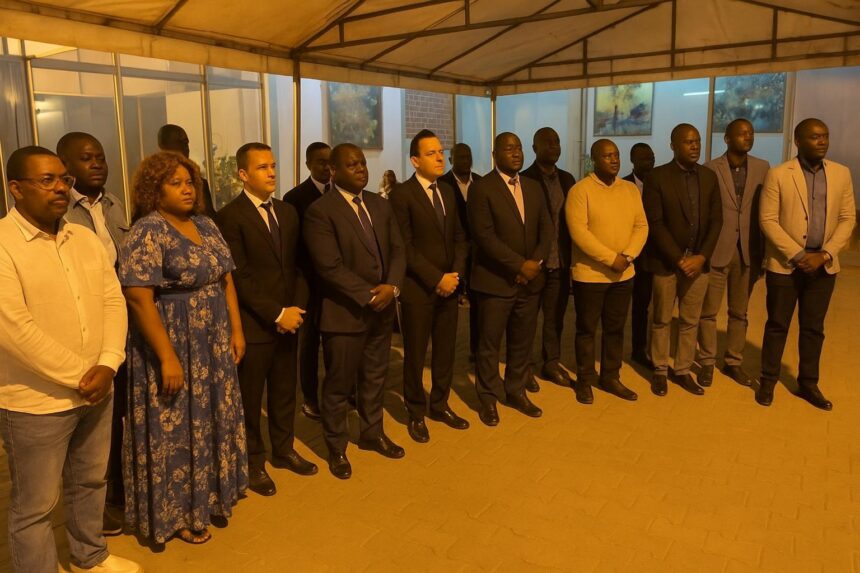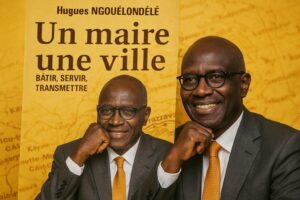Cinema comeback in Pointe-Noire
A warm sea breeze drifted across downtown Pointe-Noire as the Musée Cercle africain switched on its projector again on 3 October, ending more than a year of silence. Residents queued before sunset, smartphones ready, eager to rediscover a venue that once punctuated their Friday routines with stories on the big screen.
Inside the century-old walls, officials and cinephiles greeted each other with elbow bumps and laughter. The crowd included Lis Pascal Moussodji, chief of staff to the Minister of Cultural Industry, and Enrico Nunziata, Italy’s ambassador to the Republic of Congo, whose presence underlined the evening’s international flavour.
Faré Cinéma, a bridge across continents
The night marked the Congolese leg of Faré Cinéma, a global initiative steered by Italy’s Ministry of Foreign Affairs to promote high-quality Italian filmmaking abroad. Previous editions have lit up screens from Buenos Aires to Nairobi; Pointe-Noire now joins the map with a distinctly intercultural twist.
“Our aim is not just to show films but to encourage dialogue between crews, languages and social questions we all face,” Ambassador Nunziata told the audience, noting that the relaunch fits within the Mattei Plan’s cultural chapter and the Congolese government’s drive to expand creative industries.
Friday line-up blends two visions
Curators selected one Italian and one Congolese feature to symbolise the new rhythm. First came “Dafné” by Florence-based director Federico Bondi, the tender road movie of a young woman with Down syndrome and her grieving father. Its nuanced look at disability earned applause at the Berlinale and quickly charmed the Pointe-Noire watchers.
Next, the lights rose on “Grave Erreur 2”, a suspense-laden drama by local filmmaker Richi Mbebelé. Betrayal, jealousy and fragile friendship unfold in familiar Brazzaville backdrops, sparking knowing murmurs from spectators who recognised their own neighbourhood codes.
Between the two screenings, organisers slipped in a short video tribute to Congolese pioneer Félix Tchicaya, reminding newcomers that national cinema dates back to the 1960s and deserves steady support.
Audience reactions fuel optimism
At the exit, 24-year-old student Mélissa Mabiala said she felt “proud to see our stories side by side with Europe’s,” before snapping selfies under the museum’s wrought-iron porch. Nearby, pensioner Jean-Blaise Tsiba praised the Italian film for its “humanity without pity,” adding that the double bill proved cultural exchange is no one-way street.
Organisers reported nearly 180 tickets sold, close to the room’s safe-capacity limit, an encouraging sign for weekly sessions planned until December. Volunteers handed out flyers inviting attendees to vote online for future themes, from climate change to football legends—evidence of a service-oriented approach that listens to public taste.
Officials stress cultural diplomacy
Lis Pascal Moussodji reminded reporters that Congo’s Creative Industries Act offers tax incentives for co-productions, “an open door for Italian partners who wish to shoot here on the coast or along the Kouilou.” He sees the Friday screenings as a showroom for local talent and a magnet for tourism revenue.
The museum’s foundation, backed by energy company Eni Congo, has earmarked funds to refurbish seating, upgrade sound and install solar panels, ensuring steady power during Pointe-Noire’s humid season. “Good projection quality is a matter of respect for directors and for paying audiences,” foundation president Irène Nsitou emphasised.
Inside the creative economy boost
Beyond ticket sales, each screening night funnels work to young technicians, caterers and graphic designers. Local popcorn vendor Armand Kimpolo said demand doubled compared with the last cinema cycle in 2022, enabling him to hire two cousins fresh out of school.
Film lecturer Stéphanie Nguimbi noted that seeing Congolese stories in a professional setting energises her students. “Streaming is fine, but a collective gasp in a dark room is irreplaceable,” she smiled, hinting that the Musée Cercle africain might soon host masterclasses on scriptwriting and sound design.
Looking ahead to December finale
Programme coordinator Mauro Ricci revealed that the closing night will pair an award-winning Italian documentary on coastal erosion with a Pointe-Noire-shot short exploring mangrove preservation, aligning cinema with everyday environmental concerns of residents. Talks are under way to invite fishermen and city planners for a post-film debate.
If attendance stays high, the foundation hopes to expand to a mobile screen touring inland districts, making art accessible where broadband remains patchy. “Cinema on wheels,” Ricci laughed, “because stories travel better than asphalt sometimes.”
What visitors need to know
Screenings run every Friday at 19:00. Tickets cost 2 500 CFA francs for adults, 1 500 for students, purchasable via mobile money or at the gate from noon. The museum advises arriving early for the best seats and reminds patrons that masks remain recommended indoors.
A small exhibition of vintage Congolese posters lines the foyer, free to any ticket holder. The café serves Italian espresso alongside local ginger juice, embodying the cross-cultural flavour that organisers hope will keep conversations flowing long after the credits roll.
A postcard of resilience
As Pointe-Noire’s port cranes blinked in the distance, the projector clicked off, and applause rippled one last time. The Musée Cercle africain had proved that a pause need not mean a full stop. In a city where oil rigs often dominate headlines, a reel of film reclaimed the spotlight.





















